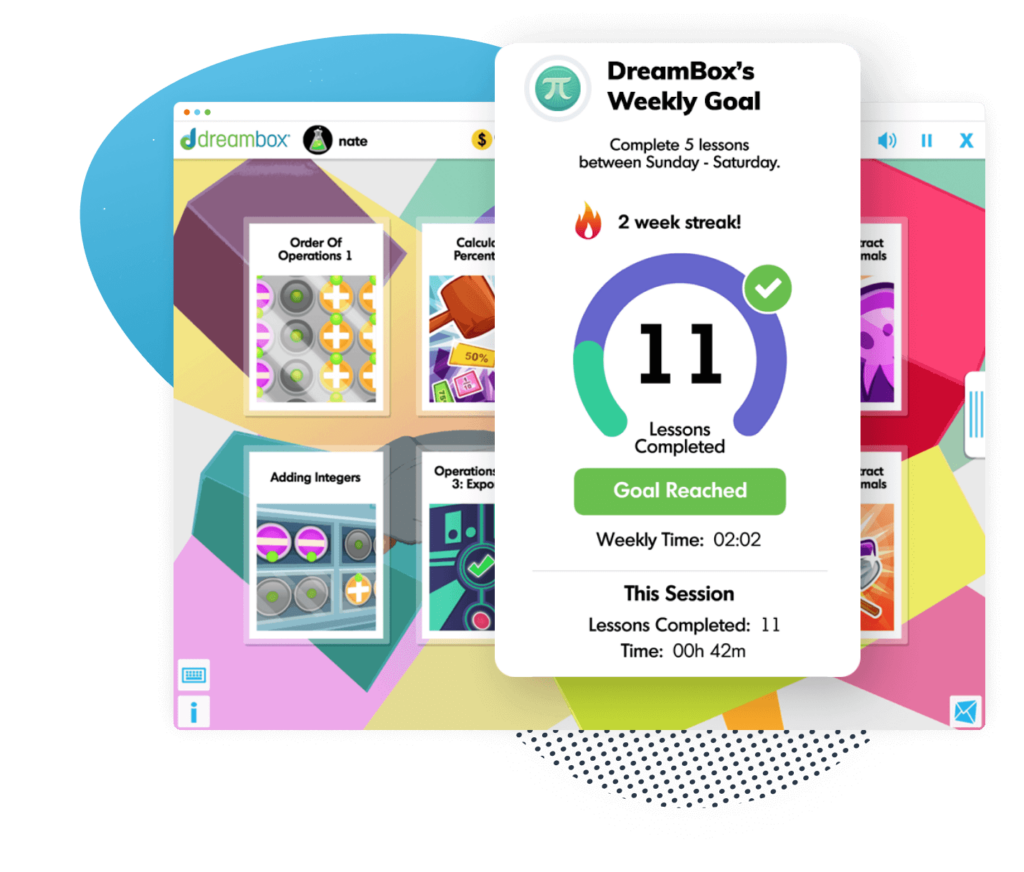What to Know About Kindergarten Homeschool Curriculum and More
Wondering how to homeschool kindergarten? Keep reading for tips on kindergarten homeschool curriculum, schedules, and activities.

Author
Kristy Howard
Published:
March 2025
Key takeaways
- • Kindergarten homeschool curriculum doesn’t need to be expensive, time-consuming, or complicated!
- • Don’t overthink your kindergarten homeschool schedule (I promise, it can be more simple than you might think.)
- • Homeschooling for kindergarten has its challenges, but the rewards and fun are more than worth it.
My foray into homeschooling began with a little pink desk, a kindergarten homeschool curriculum stack, and my eager five-year-old daughter. That first year, we “did school” for about an hour daily, while the preschooler tagged along and the baby napped.
In the years that followed, I homeschooled kindergarten four more times, as each one of my babies climbed into that little desk with eager faces and their box of chunky crayons.
The one thing I’ve learned about kindergarten homeschool curriculum, schedules, and activities is that nothing needs to be complicated! Those sweet (and equally challenging) years are some of the best homeschooling memories I have as a mom.
If you’re wondering how to homeschool kindergarten, I’ve got you covered! Pull up a chair and pour yourself a cuppa, and I’ll share everything you need to know.
(Also read: “How to Start Homeschooling.”)
Let’s start with the obvious question:
How do you homeschool a kindergartener?
My best advice if you’re learning the ropes of homeschooling with a kindergartener is to keep things simple. There’s no need to overcomplicate your schedule, your curriculum, or your expectations of yourself or your child.
If you’re brand new to homeschooling and don’t have a context for what homeschooling kindergarten looks like, here’s what homeschooling is not:
- Rigid
- Hours and hours of “doing school”
- Hustling in the morning
- Tons of busy work
- Tons of testing
Homeschooling for kindergarten is a beautiful introduction to home education because teaching kindergarten doesn’t require much time, experience, or expertise. All you need is a big heart for helping your child discover the joys of learning!
Here are a few typical kindergarten homeschool activities:
- Cuddling and reading aloud on the couch
- Trips to the library and park
- Making shapes and letters out of homemade playdough
- Fun worksheets and coloring pages
- Lots of dress-up and role-playing
- Fun games for game-based learning
To prepare yourself for homeschooling for kindergarten, consider doing three things:
- Figure out your teaching style
- Join a homeschool Facebook group to connect with other moms
- Find a weekly class or activity to enroll your child in
Let’s look at each of these steps, and how they can set you up for success as you homeschool kindergarten.
Figure out your teaching style
Regardless of your previous education or work experience, the minute you decide to homeschool your kids is the minute you become a teacher. So become the best teacher you can be!
A fun and helpful way to do that is to learn about teaching styles, and which one you lean toward the most. Here’s a fun and free homeschool style quiz you can take to help you determine what your teaching style might be.
Here is a peek at eight of the most common types of teaching styles when it comes to home education:
- Traditional homeschooling
- Montessori homeschooling
- Charlotte Mason Methods
- Waldorf homeschooling
- Worldschooling
- Classical homeschooling
- Unit studies homeschooling
- Eclectic homeschooling
Lots of people are a mix of two or more of these, and it’s helpful to know where your strengths and creative streaks lie.
Not sure what any of these homeschooling types mean? That’s okay, too! Being a homeschooler means that you also signed up to be a lifelong learner, not just a teacher. Take the quiz, see what your results are, and then do some reading up on the types of homeschooling you score high in. This knowledge will help you when it comes to picking out a kindergarten homeschool curriculum, which we’ll talk about very soon.
Want to take it a step further? Learn about your child’s learning style, too! Read “7 Learning Styles That Every Parent Should Know.”
Join a homeschool Facebook group
Even if you can’t attend a homeschool event, find a Facebook group for homeschoolers! Chances are there are groups just for home educators in your area, so make sure you do a simple search on Facebook to find out.
You can also request to join this group as a starting point.
Table of contents
Get help with homeschool math with DreamBox!
Find a weekly class or activity for your kindergartener
If you’ve plugged into a Facebook group or attended a homeschooling event, chances are you’ve heard about a local co-op you can join. If not, take the time to join a Facebook group (or some kind of online forum if you’re not on social media), or do a Google search for “homeschool co-ops near me.”
Joining a homeschooling community for weekly classes, lessons, play dates, and kindergarten homeschool activities can be a highly beneficial part of homeschooling kindergarten. Your child will have the opportunity to make friends and have lots of fun while learning new things, and you’ll hopefully find a support group of homeschool moms to connect with.
Another part of how to homeschool kindergarten is making a plan of what you’ll be teaching. Let’s talk about that!
What subjects are taught in kindergarten homeschooling?
From an educator’s point of view, here is a list of subjects that are age-appropriate for teaching a kindergartener:
- Early math concepts
- Physical education
- Art
- Emotional development
- Writing and motor skills
- Science
- Language arts
- Cognitive development
- Reaching (identifying letters and their sounds)
- Social studies
- Geography
- Language development
- Social skills
But don’t panic! Most of these “subjects” are organically taught through play throughout the day, and the three R’s are really all you need for a kindergarten homeschool curriculum.
So that original list can be summed up as follows:
- Lots of picture books to read together (on all “subjects”)
- Worksheets for letters, numbers, shapes, etc.
- Simple math: counting and number recognition
- Lots of playtime, both at home and with friends
Honestly, the best kindergarten homeschool activities I ever did were reading out loud to my kids and giving them the freedom to play and explore every day.
Spending time with a homeschooling community will add a robust dynamic to your child’s kindergarten experience, as they learn social and language skills, get lots of exercise and playtime, and develop emotional intelligence through interacting with peers (and kids of all ages).
And there’s more good news! Kindergarten homeschool curriculum doesn’t need to be expensive, time-consuming, or complicated. Let’s look at a few favorites!
What are the best kindergarten homeschool curriculums?
Homeschooling for kindergarten with My Father’s World kindergarten worksheets was by far my favorite curriculum pick! In my opinion, you don’t need to spend much money on anything else. Trips to the library, lots of outside and imaginative playtime, and tons of hands-on learning are all you need to create a robust learning experience.
If you’re a list-lover and need specific recommendations, here are some of the top curriculums for homeschooling kindergarten:
- All About Reading
- Ambleside Online
- BJU
- Classical Conversations Foundations Program
- Easy Peasy Homeschooling
- The Good and the Beautiful
- Master Books
- My Father’s World
- Sonlight
Reading kindergarten homeschool curriculum
Lots and lots of picture books! Read to your little student every day. Make it a habit to show up for weekly library story times!
Letter flashcards, crafts, and coloring sheets are fantastic “reading curricula” for your kindergartener.
A lot of homeschool moms worry about teaching their children to read in kindergarten. Here are my thoughts and experiences on that.
I’ve homeschooled five children, and only one of them learned to read in kindergarten. Another child was a pretty solid reader by the end of third grade. The other three have dyslexia, so their reading journeys
took years (and lots of patience and trial and error.)
What I learned is that no two kids are just alike. If you get started with phonics and early reading skills in kindergarten and your child is “getting it” as quickly as you’d like, don’t panic.
Lots of kids struggle with reading, and just because your child doesn’t learn to read in kindergarten doesn’t mean there’s an underlying problem.
Your reading curriculum should focus on teaching letter recognition and sounds by lots of repetition, and lots of fun. Unless your child is the exception and shows signs of learning to read at a young age, do yourself a favor and let them ease into this skill. Your child will learn to read!
Writing kindergarten homeschool curriculum
Keep it simple! A box of chunky crayons and tracing or coloring worksheets. Don’t fret if your little one isn’t great at writing or other motor skills yet. Boys especially need some extra time to master motor skills like writing their names or remembering how to “draw” letters.
Let them trace, color, finger paint, mold clay, and play-dough shapes, and practice cutting with kid-safe scissors. You don’t need a curriculum for this, but if you want something fun to keep you on track, check out the Early Learning Bundle, by Intoxicated on Life.
Math kindergarten homeschool curriculum
The kindergarten worksheets from My Father’s World include lots of counting and number recognition/writing practice. The packet is an all-in-one kindergarten homeschool curriculum, which is so nice!
If you want to beef things up a bit with some extra fun here are 25 math activities for kindergarten, and 50 kindergarten math problems you can work on at home.
Also, read “What’s the Best Homeschool Math Curriculum?” and check out these resources for homeschool math.
Science and social studies kindergarten homeschool curriculum
For science and social studies at this age, nothing beats picture books and reading aloud!
I can’t say this too many times: your child will retain so much if you make read-aloud times a fun and regular part of your day. Linger with each book. Ask questions, teach your child the art of narrating back the story to you, explore the pictures, and just savor each story.

The math program that drives results
Get started today!
DreamBox adapts to your child’s level and learning needs, ensuring they are appropriately challenged and get confidence-building wins.
What is the best schedule to keep your homeschooled kindergartener on?
Our best kindergarten homeschool schedule was pretty basic.
- Get up and eat breakfast (no rush)
- Morning time – more on that below!
- Something crafty or hands-on for learning or reviewing numbers and letters
- Memorization – catchy songs for learning any kind of facts
- Lunch
- Naps or quiet time
- Playtime in the afternoon
- Evening bedtime routine
Especially during the early years (like preschool and kindergarten), homeschooling is more “home” than “school.” The academics are gentle and paced to suit your child, and what they need more than anything else is security, lots of fun, bonding, and reliable routines.
What is “Morning Time?” (And why you need it in your kindergarten homeschool schedule.)
For years, my kids and I started every day with “Morning Time.” I can honestly say that this was the single most important habit I implemented into our daily schedule as a homeschooling family!
You can learn more about Morning Time, and how to create a homeschool morning basket, by tuning into Pam Barnhill’s blog and podcast. But for the sake of this article, I’ll explain how I used the Morning Time idea to create structure and simplicity for my homeschool routine.
Morning Time is simply gathering together with your kids (the dining room table was our gathering spot) at the start of the day to read, work on activities, and learn together. The beauty of Morning Time is that it creates a regular space for your kids to learn together, which is helpful if you’re homeschooling multiple ages!
Is your kindergartener learning about ladybugs in science? Let the toddler sit in and listen while you read aloud or work on a project.
If you have older kids, Morning Time is the perfect chance for your kindergartener to listen in on the history lesson or literature readings.
So much learning is absorbed during Morning Time, especially if you give your kids a snack and something to color or play with while they’re listening.
Here’s an example of subjects and activities you can explore during a typical Morning Time:
- Reading aloud – any subject!
- Flashcard or fact reviews
- Math games
- Coloring and tracing
- Crafts
- Science and history picture books
- Handwriting practice
- Finger painting
What are some kindergarten homeschool supplies to have on hand?
This is such a fun part! Here are some of my kids’ favorite kindergarten homeschool supplies over the years:
- Chunky Crayons
- Finger paints
- Stickers
- Glue sticks
- Tracing pages and worksheets
- An abacus
- Building blocks
- A book basket
- Playdough and cookie cutters
- A dress-up box
- A play kitchen and small apron
- Quilts and blankets for building forts
Here are a few supplies you’ll need as a homeschooling mom:
- Planner
- Access to a printer and computer
- A 3-ring binder
- A few folders and notebooks
- General school supplies
- Learning games (read more about game-based learning!)
- A library card
- Coffee and chocolate!
FAQs about Kindergarten Homeschool Curriculums
Subjects for homeschooling kindergarten can be summed up in early math concepts, reading and writing, and lots of imaginative play at home and with friends (ideally a homeschool co-op, if possible).
One of the best ways to get started is to connect with other homeschooling moms (through events or Facebook groups) and attend a homeschool conference. Joining a homeschool co-op is a huge plus! To homeschool your kindergartener, buy a kindergarten homeschool curriculum that suits both your teaching style and your child’s learning style, invest in a few school supplies, create a sustainable homeschool schedule, and get started. You’ll learn as you go, so don’t overthink it!
Homeschooling is an excellent option for kindergarten! It’s easy and fun to teach, doesn’t need to be expensive or time-consuming, and can pretty easily flex around lifestyle dynamics (work schedules, other siblings, etc).
That’s a great question! The answer depends on if you’re looking for a faith-based or secular approach, and what teaching and learning styles look like for your family.
A few top homeschool curriculums out there include Easy Peasy Homeschooling, Sonlight, My Father’s World, Ambleside Online, BJU Press, Classical Conversations, The Critical Thinking Company, The Good and the Beautiful, and All About Learning Press.
A few common challenges for homeschooling kindergarten include expecting your child to sit still for long periods and pushing them to read earlier than they’re able. The good news: homeschooling kindergarten shouldn’t be time-consuming (see below), and your child has plenty of time to learn everything he or she needs to know. Keep homeschooling kindergarten simple and FUN!
This is a question I had as a new homeschooling mom, and a wise friend, who had years of homeschooling experience, gave me the best advice: “If you’re spending more than an hour a day doing school, you’re doing too much.” Sit down with your kindergartener for “school time” for short amounts of time–at the table, on the couch, on a play mat, or wherever they learn best–and let life be the biggest learning experience they have.

About the Author
Kristy Howard
Kristy Howard is a Fort Worth-based writer, homeschooling mom, and lifelong introvert. When she’s not writing for clients, Kristy enjoys thrifting designer clothes, taking long walks in nature, and creating content for her lifestyle blog for introverted women.
Take at home math practice to the next level
Empowering parents and educators to make math practice more impactful. Plus, your kids will love it.


